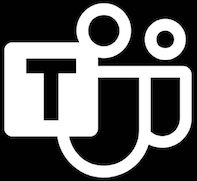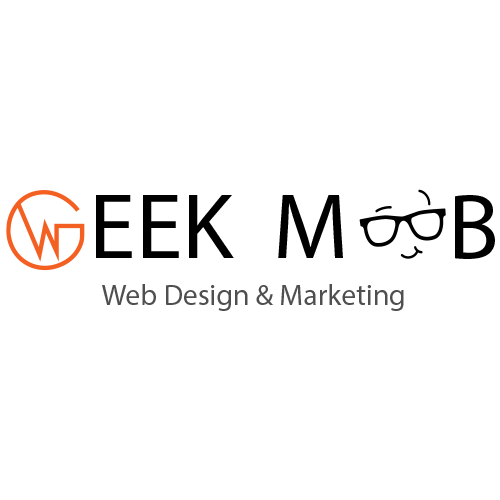How To Choose A Headless CMS
Web pages, such as the one you’re reading now, have text, images, videos and other assets to bring information to you. This data would be collated and authored in a Web Content Management System (WCMS) by a content editor. WCMSes have gone through an evolution moving from a Traditional CMS to a Decoupled CMS to a headless CMS.
Moving to a headless CMS is not an easy decision and the selection process should not be taken lightly. In this article, I will highlight a few core features that every headless CMS should provide. We will explore those features, the associated challenges and help you choose a headless CMS to satisfy your organization’s unique requirements.
As the Technical Director at Luminary, I have been helping our clients choose the best CMS, DXP (Digital Experience Platform) or headless CMS to suit their needs. With Luminary’s 21 years of experience in the digital space, my experience of 17 years in the CMS space as well as our focus on Headless since 2016, here are my two cents on what you should look out for.
THINGS TO CONSIDER WHEN CHOOSING A HEADLESS CMS
-
- Concepts
- Microservices architecture
- Omnichannel
- For content authors
- Editing experience
- Managing images
- Authoring Roles
- Workflows
- Previewing content
- Localizing content
- For developers
- RESTful and GraphQL APIs
- Native SDKs
- Environments
- CDNs
- Usage Limits
- Other Factors
- Data centre locations
- Technical and sales support
- Enterprise features
- Infrastructure Integration
- Concepts
Monolithic Vs Microservices
We’ve explored the concepts behind headless CMSes in detail here on Smashing Magazine, but let’s do a quick recap. When it comes to a Traditional CMS, the CMS and the resulting front-end website are built on a monolithic architecture. The Traditional CMS tries and succeeds in many ways to serve the needs of the developer, content author, and marketer. For example, if the CMS is built on Microsoft’s .NET Framework, the front-end website would also be built on the same technology. All functionality and integrations would also have a tight dependency which in turn results in a large, cumbersome monolithic code base.
Decoupled CMSes have removed this interdependence to a certain extent. This has been achieved by separating the front-end website from the CMS back-office and content repository.
Monolithic architecture takes a back seat with headless CMSes. The CMS and every other integration is a microservice. The CMS itself is provided on a Software-as-a-Service (SaaS) model which I like to term Content-as-as-Service (CaaS). With this microservices architecture, everything you got from your Traditional CMS does not come out of the tin. You may have different services and vendors to provide you with the best of breed for each of your requirements.
The move to a microservices mindset needs a bit of patience. We had marketers from a Traditional CMS background who resisted the idea of delving into multiple systems and services when using a headless CMS. We managed to take them along on the journey during selection and implementation of their headless CMS platform. Now, they are advocates for that headless CMS platform as it allows them to integrate new systems and services rather than being bound to one provided by a Traditional CMS.
Look out for:
-
-
- Reputed SaaS vendors
- Integrating headless CMS as a microservice
- Best of breed services
-
Omnichannel At Its Core
As much as a microservices mindset would help you when integrating a headless CMS, the true power of headless is realized in its omnichannel nature. An omnichannel experience revolves around your customer and creates a single customer experience across your brand by unifying sales and marketing. With a headless CMS, content is provided to different channels such as web, mobile, social, no-UI smart devices, IoT devices and even non-digital touchpoints such as a bricks-and-mortar shopfront.
With a headless CMS, you need to define the schema for each content model from scratch. The process of defining this sound, logical taxonomy structure for the content items you create and publish is known as content modeling. If your first channel is going to be your website, make sure your content modeling takes omnichannel into account to alleviate any future pain. If you are only looking for a replacement CMS to just power your website, take another hard look at the Traditional or Decoupled CMS space to see if there’s something that would suit your requirements better.
When modeling content schemas, think of the future. Working for a major airline not even a decade ago, I can remember trying to model content for mobile devices (yes! there was a separate subdomain for a mobile website). This was excruciatingly difficult since the content schemas were geared towards only a desktop website. But the story holds true even today that we need to be vigilant about content modeling.
Look out for:
-
-
- Channels you want to target
- Good content modeling practices
-
Creating Great Content
Whether it is a traditional CMS or a headless CMS, the main requirement is managing content. Content authors should love working in the back-office. If you see authors turning to other authoring tools such as Google Docs for its commenting or suggestions capabilities, it may be a red flag as to what features you are missing.
Microsoft word documents, spreadsheets, Google docs always rear their heads up when working with content authors. Rather than trying to banish them upfront, the easiest way to get content authors to work on the CMS is to give them the features they need and they will automatically phase those out. When we pushed Luminary’s own website live on a headless CMS, every team member (50 of them) was given enough access to add and edit their own profile for the website. It worked a treat without having 50 Google Docs flying all over the place.
EDITING EXPERIENCE
The decision to use a headless CMS may be an IT decision. But buy-in from the marketers and content authors within the organization is critical for its adoption and success. A headless CMS which allows content authors to enter content easily, find existing content and reuse content is something that should come out of the box.
For ease of authoring content, having easy-to-use editors such as WYSIWYG editors, text editors, dropdowns and custom editors is a must. A clean and minimalist interface that allows a content author to focus on the task at hand will be appreciated. An editing interface that allows for concurrent editing, commenting, and creation of child content items in the same interface will increase the productivity of content authors.
A word of caution when using WYSIWYG editors or heavy reliance on any editing interface which produces HTML. As a headless CMS is geared to cater to multiple channels, relying on WYSIWYG editors would take away the atomic nature of content which can be reused. Make sure that custom editors allow accessing data fields at a granular level. We have seen this hamper the reuse of content across different channels such as mobile and desktop for example.
With a headless CMS, organizing content items in a tree structure is not the norm. But it is a bridge allowing content authors to transition easily from a Traditional CMS to a Headless one. If content items are not visualized in a tree structure, a strong search engine with facets and tagging capabilities is paramount for your content editors. This allows authors to find and reuse existing content easily.
When reusing content, another aspect to consider is whether content items can be nested easily within other content items. This allows for maximum reuse of existing content. But beware of circular references to content which could cause headaches and performance issues. An example is a content item for a lawyer which is linked to a content item for an expertise. Then if the expertise content item is again linked to multiple Lawyer content items this could form a circular reference. Look for a headless CMS with smarts baked in to limit depth in the API and visualizations to show linked content items to avoid this pitfall.
Look out for:
-
-
- Authoring experience
- Structure of content items
- Ease of searching content
- Overuse of WYSIWYG editors
- Reusing content
-
A PICTURE’S WORTH: HOW TO HANDLE MEDIA
A picture is worth a thousand words. But image assets are heavy to transport, difficult to organize, and hard to search. In a typical CMS, you will see duplicates and poorly named image assets over time. It is important that content editors are given tools to organize, categorize, tag, reuse and search for images within a headless CMS. For me, this means organizing assets in folders or containers. But it would be good to understand what your team requires in terms of managing static assets.
The ability to upload a single image, set a focal point to it and then manipulate its dimensions and quality for different devices and screen sizes, brings massive time-savings to a content editor and even those designers/graphics artists who work behind the scenes. The delivery of static assets in formats such as WebP via a Content Delivery Network (CDN) is also crucial to serving your users a fast website.
Most headless CMSes come with these features out of the box. If not, you need to decide which features you can live without. There’s a caveat to that rule. For extensive editing of the original images, you should stick to the best tools for the job such as Photoshop.
Along with images, the next heaviest assets are videos. Once again, with the microservices mindset, streaming of videos should be left to service providers such as YouTube, Vimeo and other online streaming services. If your headless CMS can provide you with a nice editing interface to search or select a video from one of these providers, it’s a bonus.
Look out for:
-
- Organising images
- Cropping and delivering images via a CDN
- External best of breed video services
Source: https://www.smashingmagazine.com/2021/07/how-to-choose-a-headless-cms/






 Text Us
Text Us info@geekmob.ca
info@geekmob.ca Schedule Teams
Schedule Teams
